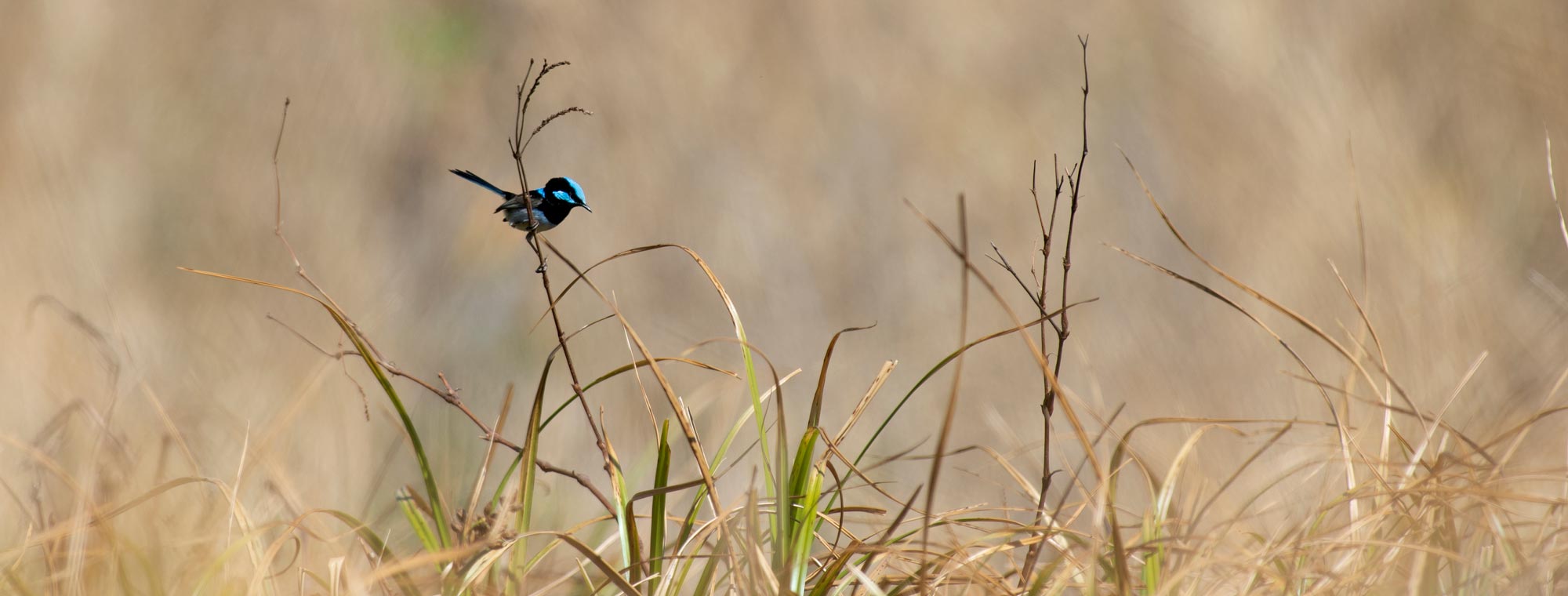
Project news: The Fairywren Project was recently featured on the ABC RN Science Show with Robyn Williams! Click the link below to listen to Joe talk to Robyn about his fairywren research, the Fairywren Project, and how he got started studying birds:
Fairywrens in the news:
Every once in awhile we like to compile all of the Fairywren research that's been published in the last few months. See the stories below for the latest fairywren findings. If you would like to read the full scientific paper but don't have access, let us know and we can send you the pdf.
1. A collaboration across fairywren researchers used 3D-printed models to measure the predation cost of conspicuous female plumage. Cain et al. found that dull female fairywren models were attacked at the same rate as conspicuous female models (brown Superb Fairywren female versus blue Lovely Fairywren female). This finding indicates females may not pay a predation cost for having fancy plumage. Read more: Cain et al. 2019. American Naturalist.
2. Purple-crowned Fairywrens had very low rates of malaria infection over a 12-year study despite mosquitos being prevalent and other nearby species having higher rates. Between 20% and 80% of Red-backed Fairywrens studied were infected with malaria, while only ~5% of Purple-crowned Fairywrens were infected. Read more: Eastwood et al. 2019. International Journal for Parasitology: Parasites and Wildlife.
3. Extra-pair paternity (males and females mating outside of their social bond) in Red-winged Fairywrens may be beneficial to incestuous pairs (mothers paired with sons). When a mother produced offspring with her son, those offspring produced 75% fewer offspring themselves when compared to offspring that came from non-incestuous relationships. Lichtenauer et al. 2019. Evolution.
4. Short-term variation in temperature and rainfall explain differences in immune function in Purple-crowned Fairywrens, while habitat quality and social group structure had no measurable effect on immune function. Read more: Roast et al. 2019. Physiological and Biochemical Zoology.
5. Infrared cameras can be used to survey night-roosting birds, including fairywrens! Read more: Mitchell and Clarke 2019. Journal of Field Ornithology.
6. Plumage colour signals competitive ability in aggressive contexts in male and female Lovely Fairywrens. Read more: Leitão et al. 2019. Animal Behaviour.
7. Nestling telomere length predicts lifespan in Purple-crowned Fairywrens that live past their first year.
Read more: Eastwood et al. 2019. Molecular Ecology.
8. The nestlings of Horsfield's Bronze Cuckoos that parasitize Superb Fairywrens nests were found to suffer no obvious costs when facing a large eviction load. Researchers hypothesized that cuckoo nestlings that had more eggs to evict (push out of) the nest would have lower mass, but instead those nestlings had higher mass than individuals that had fewer host eggs to evict. Read more: Medina et al. 2019. Behavioral Ecology and Sociobiology
9. Environmental noise from anthropogenic sources reduced Superb Fairywren response to alarm calls when the noise was high amplitude and overlapped alarm calls. Read more: Zhou et al. 2019. Functional Ecology.
Questions about any of this research? Let us know and we'll do our best to help explain it, but if we can't do that we'll put you in touch with the researchers themselves. Do you have ideas for research? Let us know by emailing us at fairywrenproject@gmail.com.
Top photo by Joseph Welklin.
